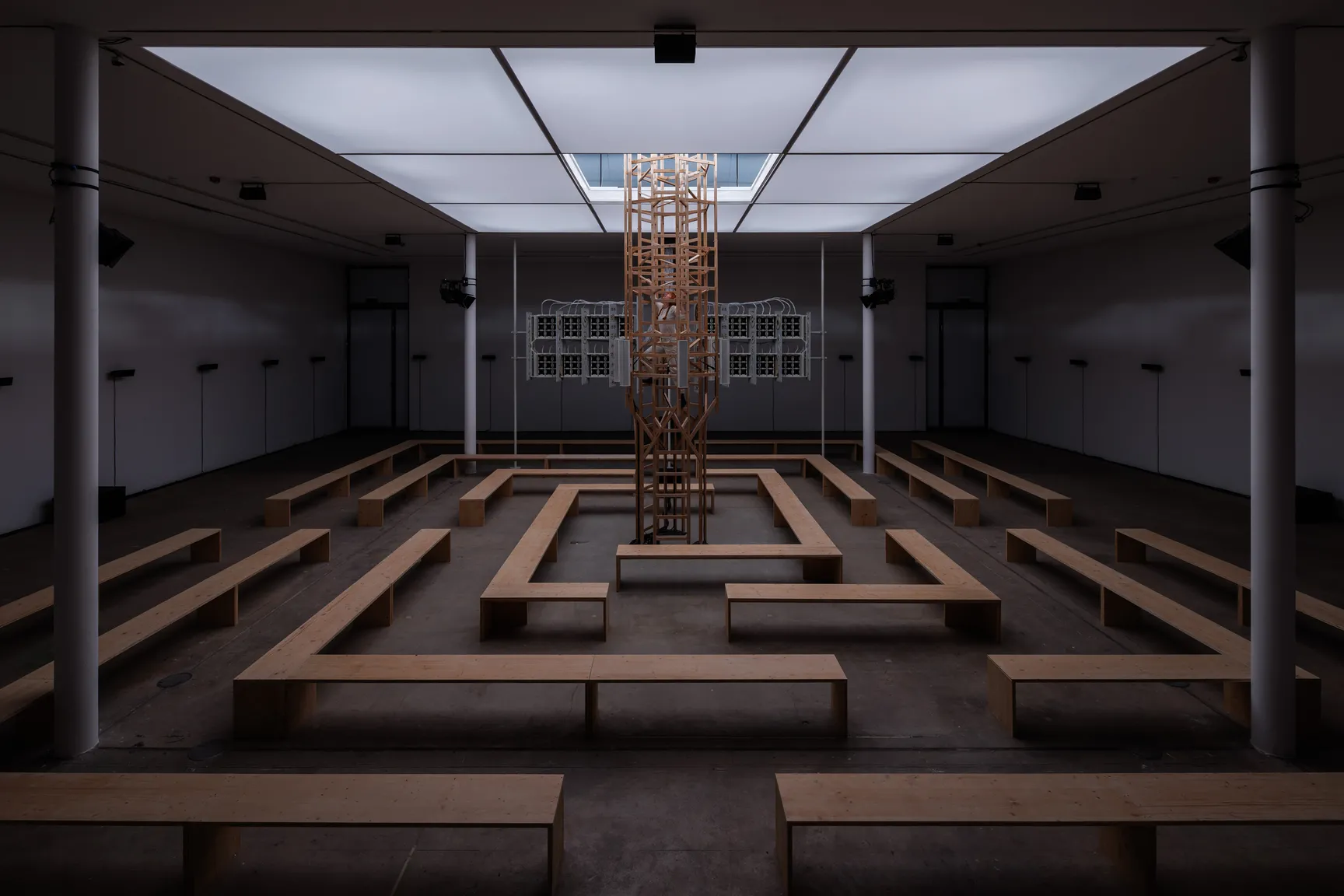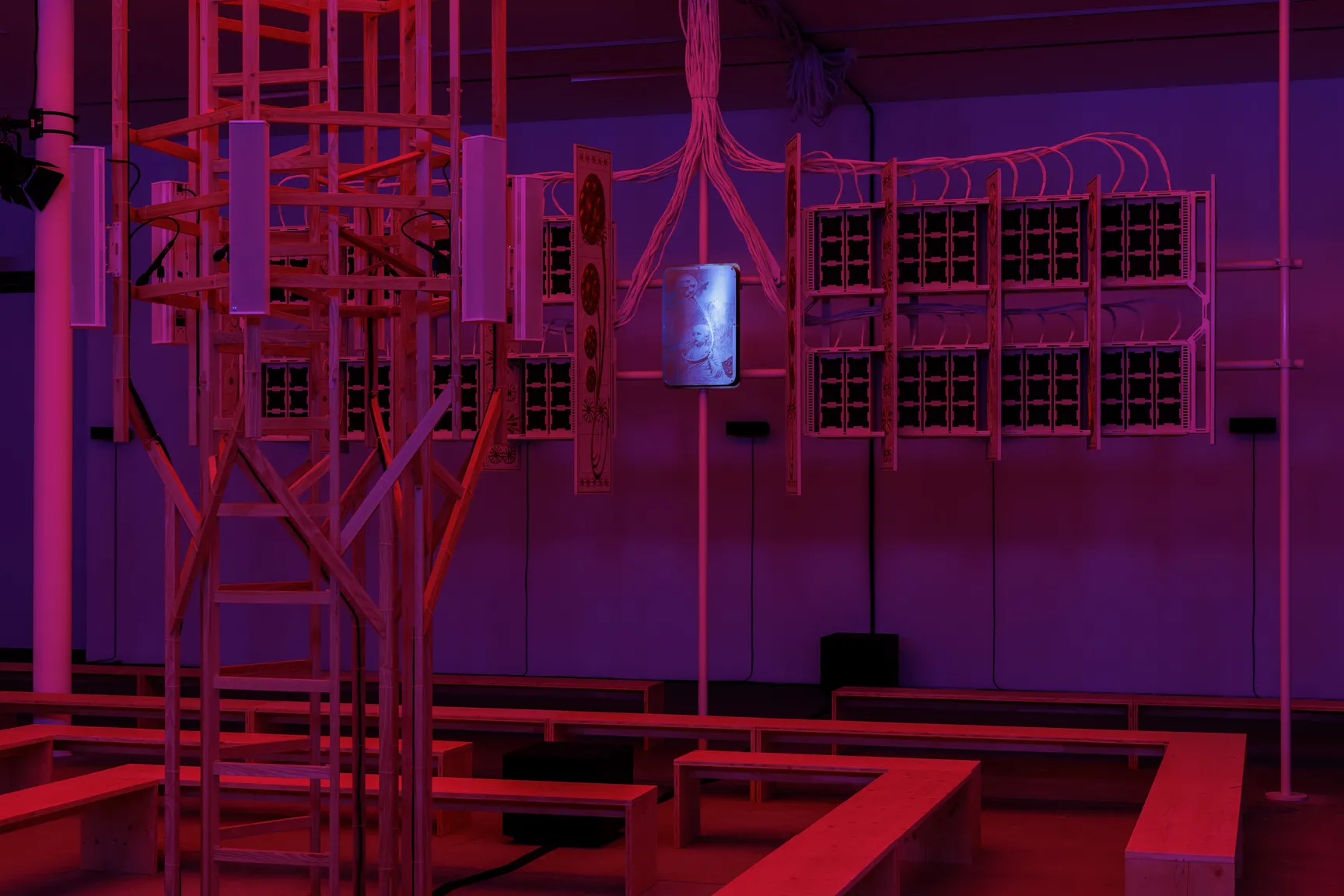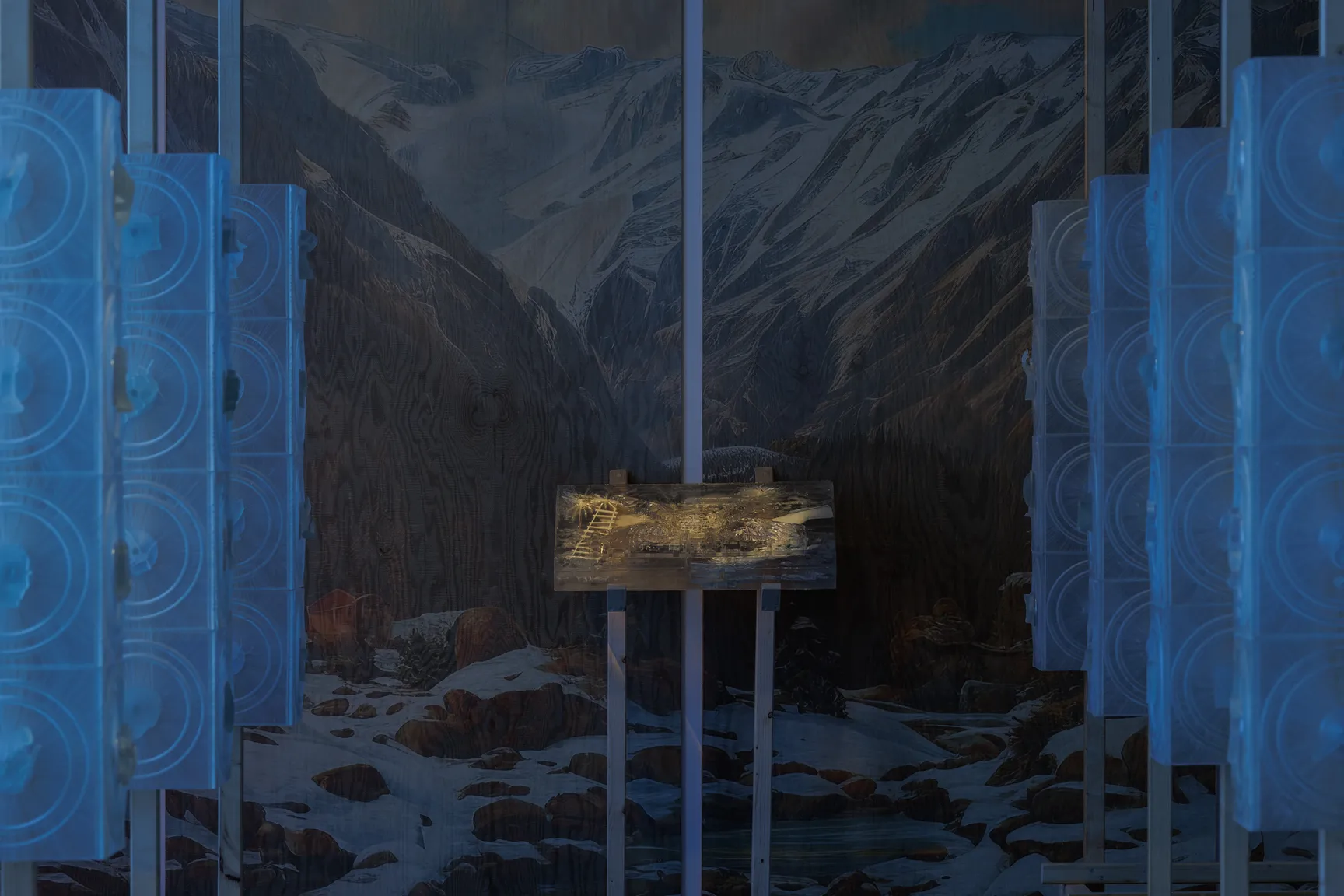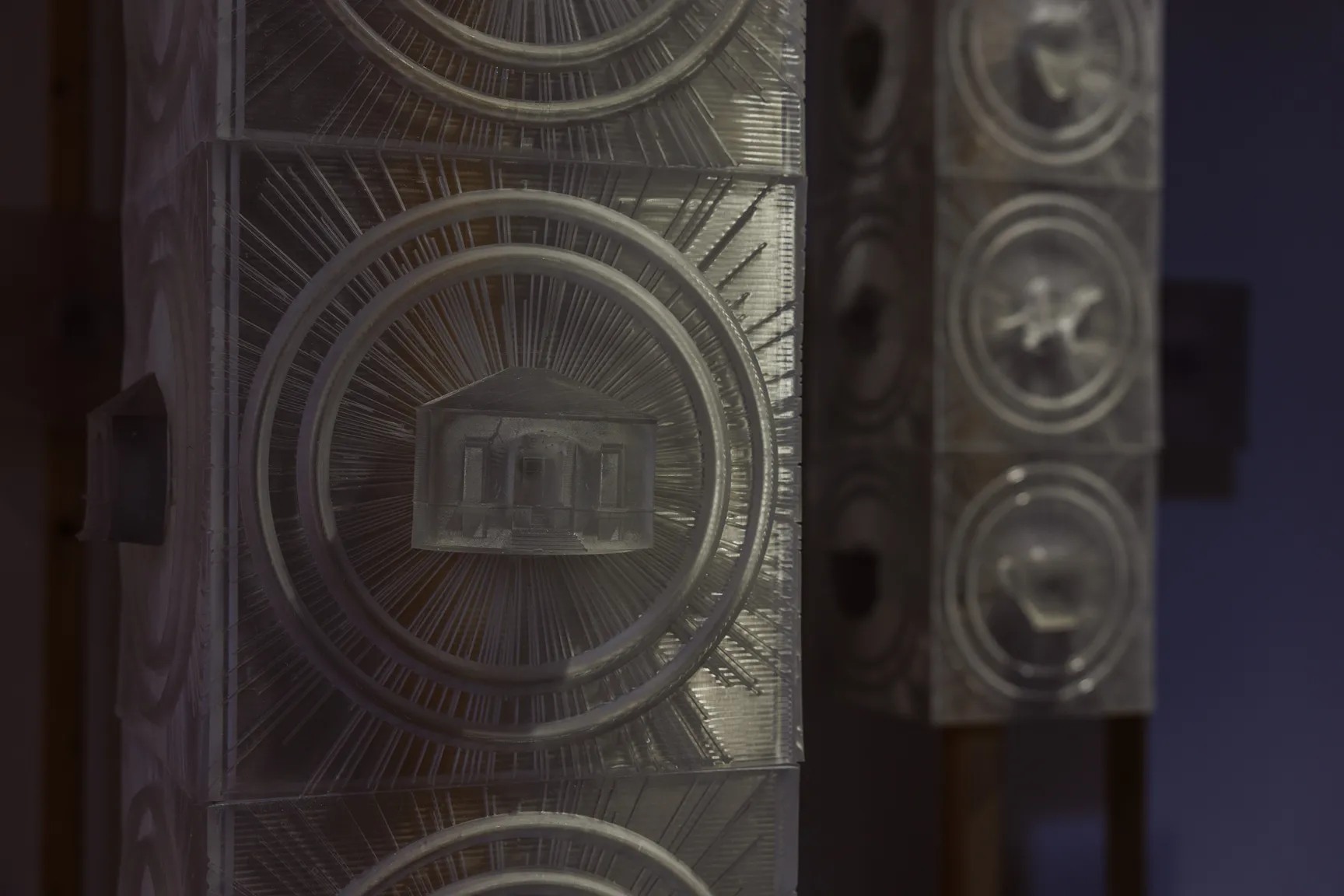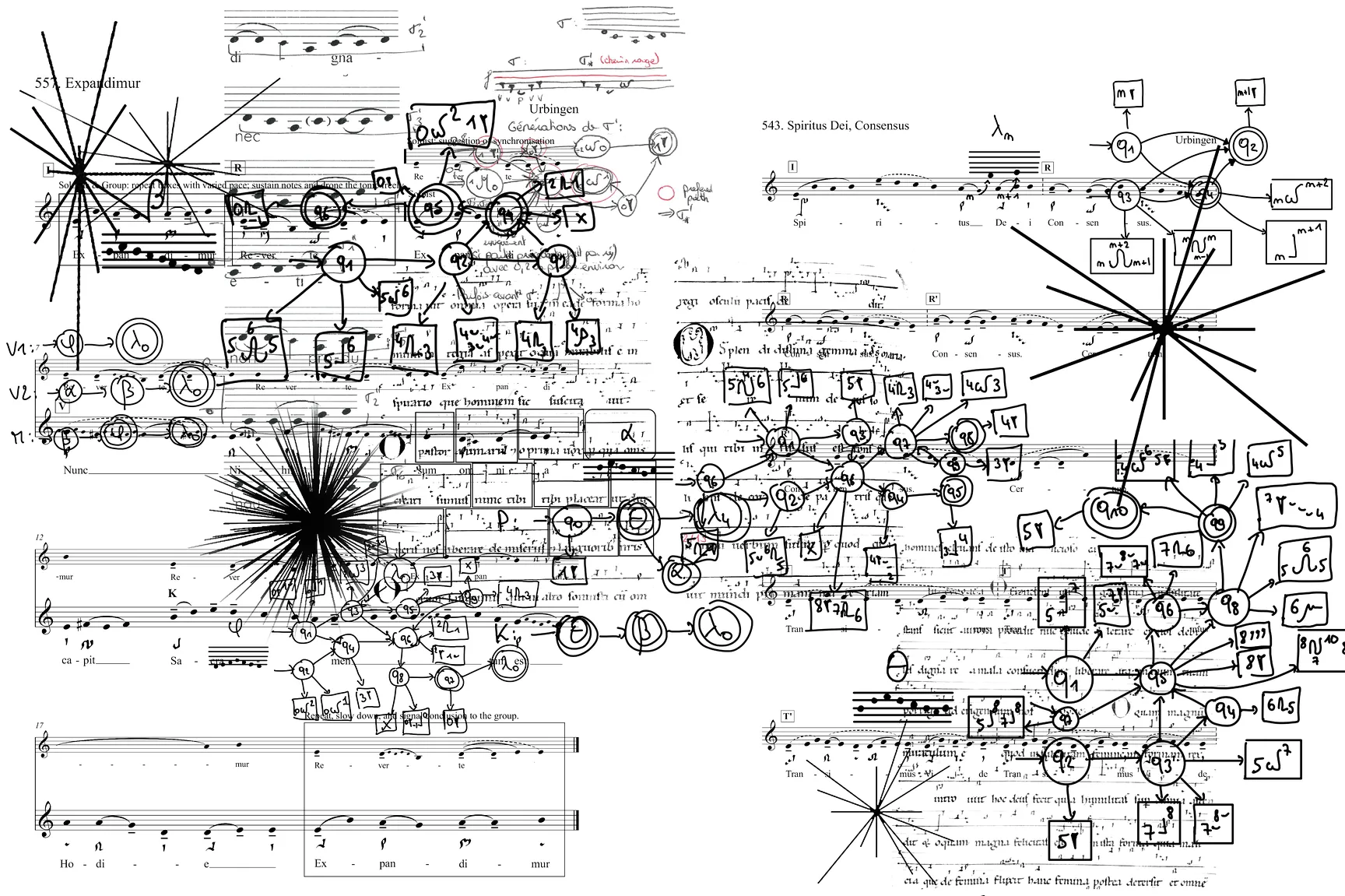In Starmirror, Holly Herndon and Mat Dryhurst transform Berlin’s KW Institute for Contemporary Art into a site of collective attunement—part cathedral, part data center.
The exhibition stages an encounter between human and artificial intelligences, exploring what it means to think, sing, and act together in the age of machine learning. Working with the architecture studio sub, Herndon and Dryhurst construct a spatial composition that merges medieval mysticism with computational logic, framing AI not as an autonomous entity but as a chorus of human participation.
The installation’s first room, Arboretum, introduces Public Diffusion, a vast image model trained exclusively on public domain data. Here, images repeat, overlap, and become archetypes—trees, mountains, architectures—echoing how ideas take root through collective use. At its core stands the Ur-Hildegard Training Corpus, a machine-learning reinterpretation of Hildegard von Bingen’s Ordo Virtutum (1151). The 12th-century play about virtue and temptation becomes a training dataset, re-coded into a living, vocal intelligence. In front of a mountainous landscape—a visual cliché reborn through algorithmic processing—the songbook stands as an altar to a new form of shared authorship.
Inside the main hall, the architecture takes on a sacred rhythm. Wooden frameworks form both scaffolding and score, guiding the viewer through a maze of benches toward a central tower. This “ladder,” part organ and part network structure, fuses the mysticism of ascent with the layered architecture of neural networks. The reference to Geoffrey Hinton’s “ladders of abstraction” is not accidental—the artists see the divine hierarchies of Hildegard and the structural hierarchies of machine learning as twin attempts to make sense of complexity.
Sound flows through the space like breath. GPU fans hum within The Hearth, an acoustic instrument that converts the computational into the sonic, transforming energy from data into resonance. Recordings from past AI choirs intermingle with live vocal sessions at KW, producing an evolving sonic landscape that is neither fully human nor machine-made. On selected Sundays, visitors become co-creators—invited to sing, to respond, to teach the system. These voices will later form a public choral dataset, a collective archive that will give rise to a new Berlin AI choir premiering in Düsseldorf.
Herndon and Dryhurst propose AI not as a replacement for human creativity but as a protocol for coordination. The exhibition argues for a more transparent and participatory technological culture—what the artists call “agentic social mediation, not social media.” The apparatus of machine learning is reimagined as a ritual space where meaning is produced through collaboration, not consumption. AI, in their vision, is a mirror held up to the crowd: it reflects our aggregated efforts, our shared voice.
There is an almost liturgical precision to Starmirror. Its wooden lattice, cold circuitry, and celestial references combine into an architecture of belief for the digital era. Where Hildegard sought harmony between human and cosmos, Herndon and Dryhurst seek alignment between human and computation.

